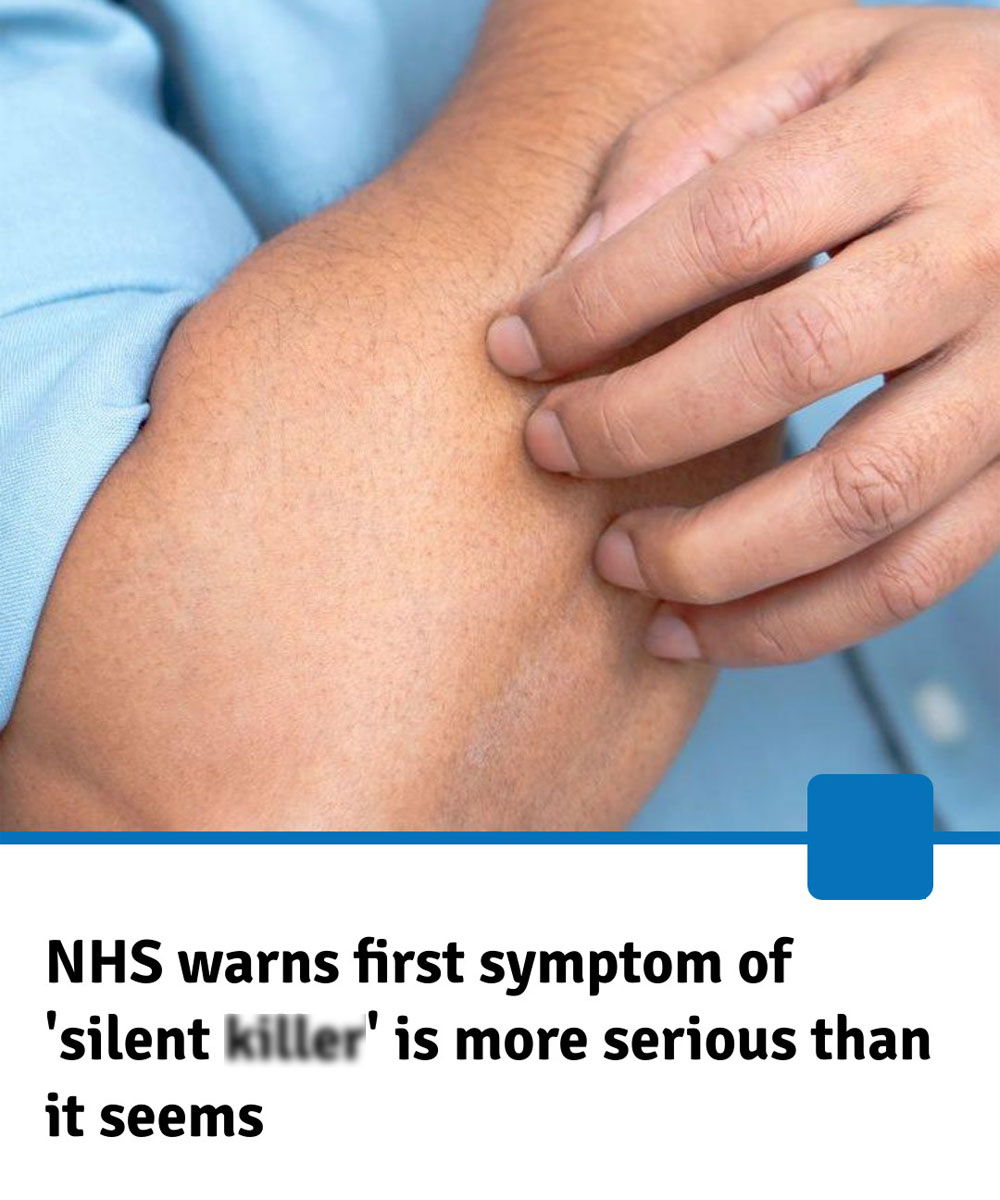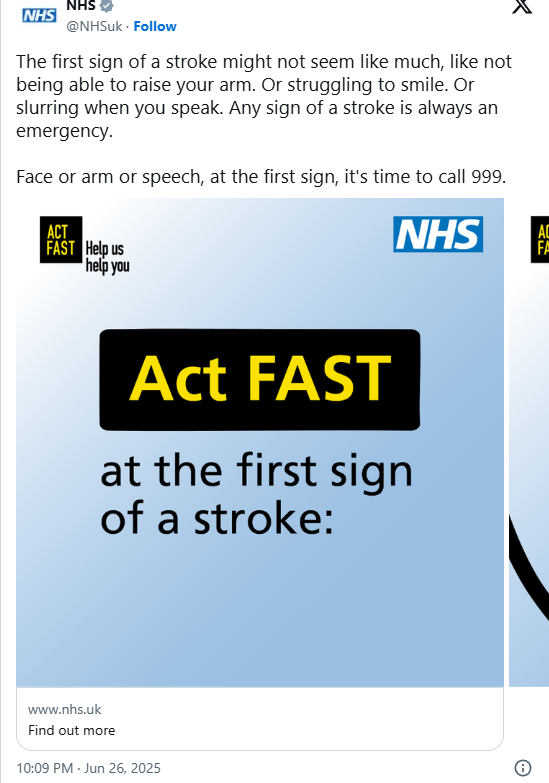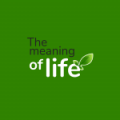
Though the NHS says the first sign ‘may not seem like much’, it is crucial to seek medical attention as soon as possible
The NHS has issued a w:arning about the first signs of a ‘silent killer’ health condition that ‘may not seem like much’. Taking to X, the health service listed the four main red-flag symptoms of a stroke, which is often referred to as a ‘silent killer’ because it a lot of people with high blood pressure, which is a big risk factor for strokes, don’t show any clear symptoms until they actually have a stroke.
In addition, there are silent strokes that can damage the brain without any noticeable signs, which adds to its name. Urging people to ‘act FAST’ the NHS posted: “The first sign of a stroke might not seem like much, like not being able to raise your arm.”
It added: “Or struggling to smile. Or slurring when you speak. Any sign of a stroke is always an emergency. Face or arm or speech, at the first sign, it’s time to call 999.” Explaining in detail the four primary symptoms, it said: “Face, has your face fallen on one side? Can you smile? Arms, can you raise both arms and keep them there? Speech, is your speech slurred? Time, at the first sign, it’s time to call 999. Act FAST.”
A stroke happens when the blood flow to the brain is interrupted, which can be because of a blockage (known as an ischemic stroke) or a bleed (called a hemorrhagic stroke). This disruption cuts off oxygen and nutrients to brain cells, causing their d.eath, which can result in brain damage and disability.
There are two main causes of strokes:
+ Ischaemic – where the blood supply is stopped due to a blood clot (this accounts for 85% of all cases).
+ Haemorrhagic – where a weakened blood vessel supplying the brain bursts.
A related condition is a transient ischaemic attack (TIA), commonly called a “mini-stroke.” A TIA happens when blood flow to the brain is temporarily blocked, leading to symptoms similar to a stroke, but it doesn’t cause lasting brain damage.

A stroke is a critical, potentially f.atal medical issue. Strokes are considered a medical emergency, and prompt treatment is crucial.
The quicker someone gets treatment for a stroke, the less likely it is that brain damage will happen. Even if the signs of a stroke disappear, you or the person experiencing a stroke should still visit a hospital for evaluation.
Main stroke symptoms can happen suddenly and include:
– face weakness – one side of your face may droop (fall) and it might be hard to smile.
– arm weakness – you may not be able to fully lift both arms and keep them there because of weakness or numbness in one arm.
speech problems – you may slur your words or sound confused.
The NHS adds: “Easiest way to remember these symptoms is the word FAST. This stands for: face, arms, speech and time to call 999.”

Other symptoms of a stroke:
There are other signs that you or someone else is having a stroke. These include:
– weakness or numbness down one side of your body
– blurred vision or loss of sight in one or both eyes
– finding it difficult to speak or think of words
– confusion and memory loss
– feeling dizzy or falling over
– a severe headache
– feeling or being sick (nausea or vomiting)
The NHS adds: “Symptoms of a stroke can sometimes stop after a short time, so you may think you’re okay. Even if this happens, get medical help straight away. A stroke is more likely to happen if you’re older, but it can happen at any age.”
What causes a stroke?
– High blood pressure: It’s a big risk factor for both ischemic and hemorrhagic strokes since it can harm blood vessels and raise the chances of clots.
– Heart conditions: Issues like irregular heartbeats (such as atrial fibrillation) and problems with heart valves can cause blood clots to form, leading to a stroke.
– Diabetes: This condition ups the stroke risk because it affects blood vessels, and high blood sugar can make brain damage worse after a stroke.
– High cholesterol: It leads to plaque buildup in the arteries.
– Smoking: It harms blood vessels, raises blood pressure, and makes blood more prone to clotting.
– Obesity and inactivity: These factors heighten the stroke risk because they are linked to other issues like high blood pressure and diabetes.
– Age: The likelihood of having a stroke goes up as you get older since arteries tend to become stiffer and narrower.
– Family history: If someone in your family has had a stroke, your risk can be higher.
Making some lifestyle changes can really help manage certain risk factors. You might also have to stick to a regular medication routine. If you have an irregular heartbeat from atrial fibrillation, taking anticoagulant medication can lower your stroke risk. If you’ve experienced a stroke or TIA, these steps are crucial since your chances of having another stroke are increased.
In most cases, it’s possible to significantly reduce your risk of having a stroke by making lifestyle changes like eating a healthy diet. A low-fat, low-salt, high-fibre diet is usually recommended, with plenty of fresh fruit, vegetables and whole grains.
Exercising regularly – this can help lower your cholesterol level and keep your blood pressure at a healthy level. Stopping smoking if you smoke, and cutting down on the amount of alcohol you drink















